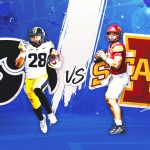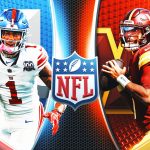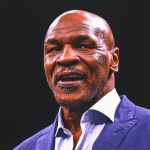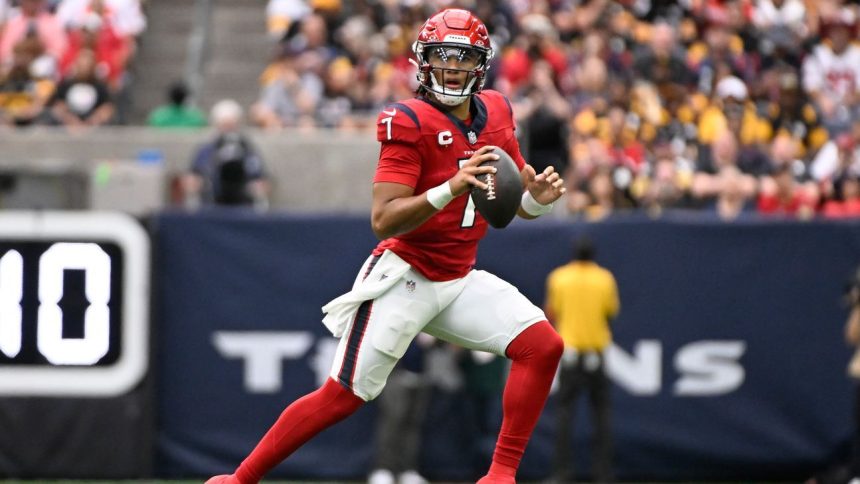
It’s fun to jump on the bandwagon. To board the hype train as it leaves the station, heading for greener pastures. Sometimes those pastures include some extra green in your pocket. Other times, it’s a one-way ticket to disappointment along with the rest of the public.
In the sports betting world, it’s essential to know the difference between a smart bet that the public is on, and a line that has taken on so much public steam that it’s moved past the point of being good value. A good bet at -110 odds isn’t automatically a good bet at -150 odds.
That’s what I’m setting out to do for you this season — help you spot those differences and think critically when you see something on TV, hear it again on a podcast, and then see it all over your social media feeds the rest of the week.
The Trap
“It’s a week-to-week league.”
“What have you done for me lately.”
“You’re only as good as your last game.”
As the NFL has gotten more popular around the world (shoutout to Drake London for scoring a touchdown in London), the overreaction to every result is heightened as well.
Recency bias is real and very common, and it affects how we predict games, set our fantasy lineups and place our bets.
The Miami Dolphins beat the Denver Broncos by 50 points in Week 3, setting all kinds of records, and Miami lost last week to the Buffalo Bills by 28 points. The way you feel about the Dolphins right now is probably different than it was last week.
Stephen A. Smith had the Dolphins at No. 1 on his list of Top 5 NFL Teams on First Take after the Denver drubbing two weeks ago.
This Tuesday, Stephen A. decided to drop Miami from the top 5 entirely and needed a reminder from Jeff Saturday not to fall victim to recency bias.
In reality, the Dolphins are not as revolutionary as they looked against the Broncos — and if they are, it’ll be a matter of time until defensive coordinators solve them — but they’re also not as bad as they looked against Buffalo last weekend.
Sportsbooks know this and are able to use data to parse through all of the noise to narrow a team down to one value or power rating. They’re not going to get every team or game right, but if they can get 52% of things right, and use the standard -110 odds on both sides of a bet, they’re going to come out on top in the long run. Especially when you factor in how many NFL games come down to one or two plays.
The New York Jets beat the Bills, almost beat the Kansas City Chiefs and almost beat the New England Patriots; three one-score games that all went down to the wire. They could easily be 0-4 right now, but they’re also a few inches on a Hail Mary and a controversial holding penalty away from a chance at 3-1.
It’s proven that a team’s record in one-score games will regress back to the mean over time. Remember last year’s Minnesota Vikings that set a record with a perfect 11-0 record in one-score games? They opened up this season with three straight one-score losses.
This week more than most, it feels appropriate to take a deep breath before projecting things out. React, but don’t overreact based on what happened last week. The NFL truly is an “Any Given Sunday” league, so try not to be shocked when it lives up to its name.
Is it a trap?
The results of Week 4 left a lot of NFL futures markets changing. Here’s a quick look at two of the major shifts and whether or not to overreact based on recent results.
Josh Allen moves to MVP favorite at +400
Tua Tagovailoa was the favorite heading into last week, and then dropped off a bit after the loss to Buffalo (now +500). He’s followed by Patrick Mahomes (+550), Jalen Hurts (+800) and Lamar Jackson (+1000).
I think this is a fair line move, as Tagovailoa catapulted to the top spot following a 70-point explosion but didn’t put up gaudy numbers by himself. This feels like a course correction and not an overreaction to the Week 4 loss.
However, I’m hesitant to bet Allen (or Tagovailoa) at this current price. Eight of the last 10 MVPs finished as the No. 1 seed in their conference, including six straight. With the AFC top spot still being so wide open, not to mention the AFC East race, I’m not willing to take a stand on either team when they’ve both looked extremely dominant in recent weeks. ESPN Analytics still has both Buffalo and Miami as the top 2 rated teams in FPI.
I’d lean towards Jalen Hurts if I had to take a bet here, as the “brotherly shove” is still working wonders and the Eagles are primed for a top seed. A less dominant defense may actually increase Hurts’ stats, and he was already a frontrunner before getting hurt at the end of 2022.
C.J. Stroud moves to Offensive Rookie of the Year favorite at +160
Stroud surpassed Bijan Robinson (+400), who had been the favorite since the market opened. We’ve got a surprisingly fun little Texans-Falcons matchup featuring both of these rookies — I’ll be honest, it would have been very low on my watchability index entering the season – and I wouldn’t be shocked to see the odds shift drastically again based on the winner of this game.
I think this is a trap. Caesars moved Stroud’s line to +200 after Week 4 but his odds continue to shrink as more people become aware of the success he’s had. His upcoming schedule is a full tour of all NFC South teams, which feels on paper like a favorable setup, but each team ranks in the top half of the league in fantasy points allowed to QBs, with Tampa and Carolina in the top 10. Each of Stroud’s last three games came against a bottom-half team in that category.
Meanwhile, Robinson has only gone out and put up 6.0 yards per attempt and average 18 touches per game. Robinson is on pace for an 80-catch season and 1,921 scrimmage yards, which would rank top 100 in NFL history and seventh among rookies. There have only been three players to record 2,000 scrimmage yards in their rookie season (Eric Dickerson, Edgerrin James, and Saquon Barkley), and all three won Offensive Rookie of the Year.
As for the other contenders, Puka Nacua is likely to lose his WR1 role with Cooper Kupp returning. De’Von Achane is at best the 3rd option on his own offense that is getting another RB back from injury as well. And Anthony Richardson has already missed 1.5 games with an injury, and won’t be putting up passing numbers worthy of giving a QB the OROY award.
The bets to make

 Dallas Cowboys at San Francisco 49ers (-4, 45)
Dallas Cowboys at San Francisco 49ers (-4, 45)
Sunday 8:20 p.m. ET, Levi’s Stadium, Santa Clara, California
49ers to win both halves (+235)
Since the start of last season, Dak Prescott ranks 3rd in the NFL in QBR when tied or leading, but falls to 24th when trailing. It’s the largest drop in QBR by any qualified starting QB in that span. If he’s trailing early, I don’t expect Dallas to stay competitive against one of the best defenses in the league.
From a math perspective, the current San Fran ML of -190 is 66% implied odds and this +235 bet has implied odds of 30%. In a scenario where the 49ers win the game, I expect a worse version of Dak throughout the game.
Dak Prescott to throw an interception (-129)
This is correlated with the previous bet as Prescott threw an interception in all five of his losses since the start of last season (averaging 1.4 per game) and got picked off in only six of his 11 wins. The 49ers have recorded an interception against 15 of 21 starting QBs in that span (71%). I’d be happy to take this line up to -150.
Game Total Theory
Unders are hitting at a 56% clip this season, including 65% over the last two weeks. There’s an underrated trend to consider when looking at betting NFL totals.
Sportsbooks will rarely move lines to extremes, with half of game totals resting between 41 and 45 so far through 4 weeks. But when they do, it seems to be signaling a clear edge to one side or the other.
Totals that close under 45 points this season have gone 24-15-1 to the under (62%). Totals closing 47 or higher have gone 8-5 to the over (62%).
The sample sizes are a little smaller than I’d like this early on, so let’s dive back a little further. Since the start of last season, totals closing at 44 or under are 107-78-2 to the under (58%).
I could imagine a scenario where sportsbooks feel confident in a lower-scoring game but aren’t moving the lines down enough to match that confidence. We know that the public likes to bet overs on player props and game totals, so there’s less incentive to post lower and lower numbers.
This week, we’ve got a lot of lower-total games and a few creeping over 50. I’m setting out to test this trend and would put a total of 2 to 3 units spread out across a collection of bets to test this theory:












